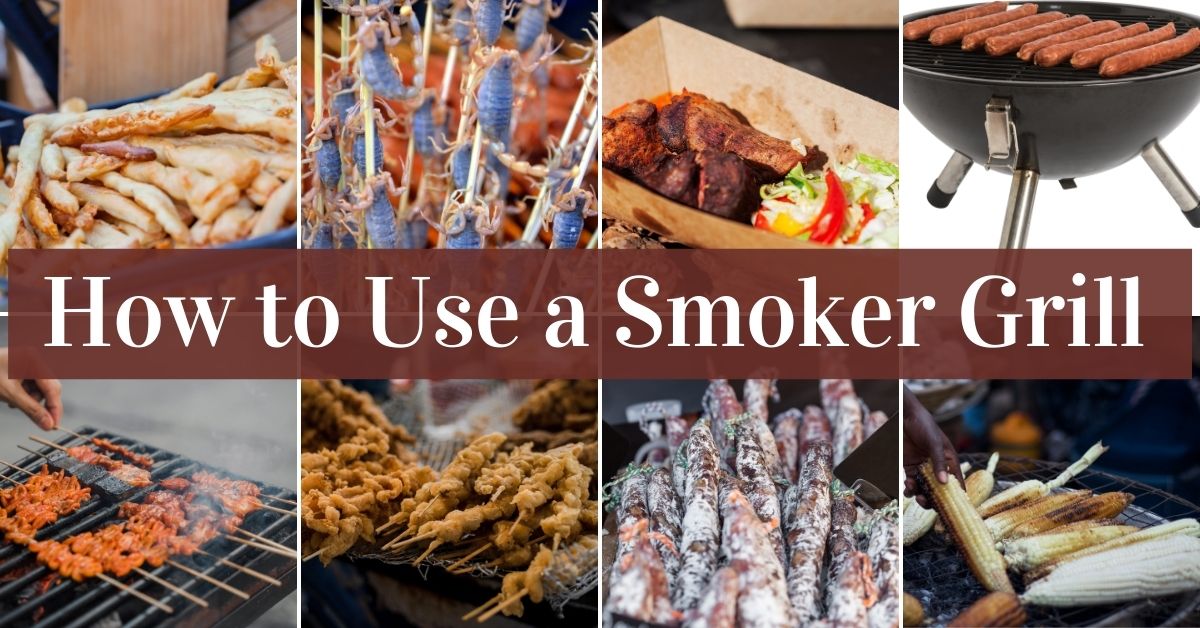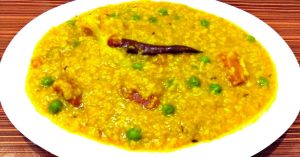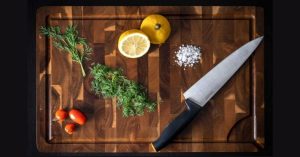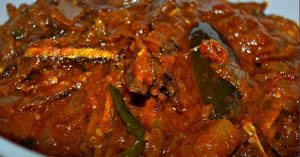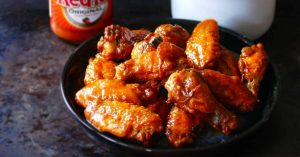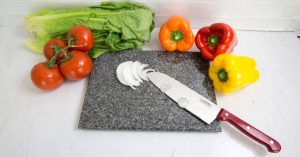The smoker grills have taken the cooking world by storm, offering a unique and flavorful cooking experience. You can combine the slow-cooking method of smoking with the beloved tradition of grilling. If you’ve been intrigued by the world of smoker grill cooking but need help with how to use a smoker grill, you’ve come to the right place. In this blog, you will have a comprehensive guide on how to smoke on a charcoal grill for grill cooking. However, if you are a beginner or want to cook your smoking skills, we’ll walk you through everything you need to know to use a smoker box effectively.
Table of Contents
How does a food smoker work?
Smoker grills are specialized for cooking, designed to infuse food with rich smoky flavors, but they can maintain in a low and slow cooking way. The smoker can use various fuels, such as charcoal, gas, or electricity, to produce heat and smoke, which are used for making grill cooking. Those griller airflow systems ensure even cooking and allow the smoke to circulate the meat, vegetables, or other dishes, resulting in tender and flavorful creations.
Several types of smoker grills are available in the market, and each smoker officer has a variety of best preferences. Please know that offset smoker grills have a separate firebox adjacent to the cooking chamber, allowing direct and indirect heat cooking. Vertical water smokers use a water pot that is regulated temperature and add moisture to the smoking process. Electric smoker grills are easy to use and maintain a consistent temperature; conversely, pellet smoker grills use wood pellets that are precisely temperature controlled and provide various smoke flavors.
What is a smoker for cooking, right?
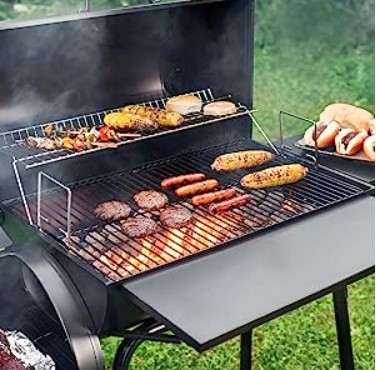
When purchasing a smoker grill, you need to consider several essential factors. You should consider the cooking capacity because the larger grills are ideal for making larger meals; on the other hand, smaller smoker grillers are more suitable for individual use. Additionally, consider the available budget and maintenance requirements to make an informed decision.
The grills Smokers have different fuel options, each with benefits and difficulty. The charcoal bullet smoker gives you a classic smoky flavor but requires more effort to maintain consistent temperatures. Gas smokers will provide you with convenience and precise temperature control, though some argue they may lack the authentic smoky taste. It is also attention that electric smokers are user-friendly and also require low-maintenance, but they might not produce as intense smokiness as other types. The pellet smokers make with the versatility of different wood flavors, which makes it a more popular choice.
Size and capacity are other factors to consider based on your cooking needs. You think about how much food you’ll typically smoke and choose a smoker grill with an appropriate cooking area. If you cook smaller grills, it is suitable for individuals or small families, but when you go to a more prominent family, you can accommodate parties and big gatherings.
How to use a smoker grill and Prepare the Smoker Grill
If you purchase a smoker grill, follow the manufacturer’s instructions to assemble the smoker correctly. You should ensure all parts of the grill smoker fit securely and check for any loose connections. When making a grill smoker, you should choose a proper location for the smoker, considering factors like ventilation and safety. You can place it on a level surface, away from flammable materials, and in an area protected from strong winds.
Remove manufacturing residues for the season of the smoker.
Before cooking any food, seasoning the bullet smoker charcoal is essential. But how to season a grill smoker is easy—just heating the smoker to a high temperature to burn off any manufacturing residues and chemicals. You should follow the specific instructions in the user manual to season the smoker properly. It ensures safe and clean cooking and helps create a barrier that prevents rust and enhances the smoker’s longevity.
Adding wood chips or chunks for flavor enhancement:
Choose the proper wood chips or chunks that complement your smoking food. To do this process, soak the wood chips in water for about 30 minutes before use to prevent them from burning too quickly. Place the soaked wood chips or chunks into the smoker compartment or directly on the hot coals; it is depended on your smoker grill type. The chips smolder releases flavorful smoke that infuses your food with the desired smokiness.
It is remembered that proper preparation of the smoker grill is essential for ensuring a successful smoking session and achieving the best possible flavors in your smoked dishes.
Essential Tools and Accessories
A few necessary tools and accessories must be ready for your grill smoker.
Must-have tools for smoker grill cooking:
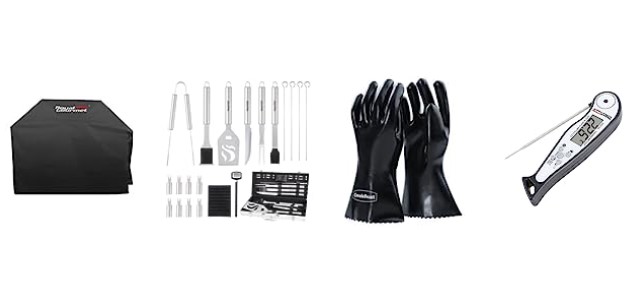
Thermometer: It is essential to need an accurate thermometer. It is used for monitoring the internal temperature of the food, ensuring it reaches the desired doneness and remains safe to eat.
Tongs: Long-handled tongs allow you to handle and flip the food on the smoker grill without risking burns or losing precious juices.
Heat-resistant gloves: Another requirement is heat-resistant gloves, which protect you from safely handling hot surfaces and racks, preventing burns during cooking.
Chimney starter: You need a chimney starter. It will help light the charcoal quickly and evenly without needing lighter fluid, which can affect the food’s flavor.
Cleaning brush or scraper: You also need to keep a smoker grill clean brush or scraper, and it will help to remove residue and debris.
Spray bottle or mop: If you want to keep the food moist and add flavor, a spray bottle filled with apple juice, vinegar, or other liquids or a mop brush for applying sauces can be helpful tools.
Valuable accessories to enhance the smoking experience:
You also need other useful accessories those need to when you smoke food.
Drip pans: You need drip pans placed under the cooking grates to prevent flare-ups. It is also used to clean up easier and reduce the risk of burning the food.
Smoking racks: You also need extra smoking racks, providing additional cooking space, allowing you to smoke multiple dishes simultaneously or stack smaller items neatly.
Meat probes: It also ensures wireless or digital meat probes, allowing you to monitor the internal temperature of the food without opening the smoker, maintaining a consistent cooking environment.
Wood chip box: You may know that some smoker grills have a separate compartment or container, and they are specifically designed for holding wood chips. It is making it easier to add and control the smoke levels.
Grill cover: A weather-resistant cover protects the smoker grill from the elements, ensuring it remains in good condition and is ready for use.
Smoking chips or chunks variety pack: If you like to get different, experiment with varying flavors of wood and the range of tastes you can achieve with your smoked dishes. A variety of wood chips or chunks allows you to try various flavors.
Having the right tools and accessories at your disposal simplifies the smoking process and helps you achieve consistent and flavorful results every time you use your smoker grill.
Select the Right Wood for Smoking
Various types of wood are used for smoking, and each flavor is different from one another. For example, fruitwoods like apple and cherry offer a sweet and mild taste, ideal for poultry and pork. Another one, hickory, provides a more robust flavor, suitable for beef and ribs. Mesquite wood delivers a bold, earthy flavor, best paired with red meats. Other popular choices include oak wood, maple, and pecan; those offer unique characteristics that can elevate the taste of your smoked dishes.
So you need to understand how different wood flavors complement specific meats and dishes are essential for creating well-balanced and delicious results. For example, delicate meats like fish and poultry pair well with lighter woods like apple or alder, while heartier meats like beef and game benefit from the robustness of hickory or oak.
Preparing the Food for Smoking
You will enjoy how to use a box smoker and how to use a smoker grill for food smoking.
Choosing the right cuts of meat and suitable dishes for smoking:
Selecting the right cuts of meat is vital for successful smoking. Fattier cuts, like pork shoulder or beef brisket, are excellent choices as they retain moisture during slow cooking. Ribs, chicken thighs, and whole poultry also work well. Additionally, you can prepare smoking vegetables, such as bell peppers, corn, and mushrooms, or even experiment with cheeses and nuts for a unique twist.
Applying rubs, marinades, and brines to enhance flavor and tenderness:
You can apply the taste and softness of the food by using rubs, marinades, and brines on the grill smoker. The dry rubs, composed of various herbs, spices, and seasonings, are applied directly to the meat’s surface to infuse flavor. You know that marinades are a liquid mixture of acids, oils, herbs, and spices that penetrate and tenderize the heart while adding depth to the taste. Brines, consisting of salt, sugar, and sometimes additional seasonings dissolved in water, keep the meat moist during smoking, preventing it from drying out.
All in above, properly cooking the food on the grill smoker is a crucial step in the smoking process, as it directly impacts the final flavor, tenderness, and overall outcome of your smoked dishes. If you select the right cuts, use flavorful rubs and marinades, and take care with trimming and preparation, you’ll set the stage for a successful smoking session that delights your taste buds and those of your lucky guests.
The art of low and slow smoking:
When you are going to low and slow smoking, it is a hallmark of achieving tender, flavorful results. If you want to do that, set the smoker to a lower temperature (usually between 225°F to 275°F or 107°C to 135°C) and allow the food to cook slowly over an extended period. This technique breaks down tough connective tissues in meat, resulting in juicy and tender dishes.
Managing smoke levels for optimal flavor without overpowering the food:
If you want to control smoke levels, it is well to strike the perfect balance of smoky flavor without overwhelming the food. You can use seasoned wood chips or chunks in moderation, especially for lighter meats or delicate foods. You should always avoid using green or resinous wood, which may produce harsh and bitter smoke. If using a charcoal smoker, add only a few wood chunks or chips at a time. In pellet smokers, adjust the feed rate to regulate the amount of smoke produced. Remember that smoking is about enhancing flavors, not obscuring them.
Maintaining Consistent Temperatures
You should follow the given consistent temperature tips:
Preheat the smoker:
You should always ensure the smoker reaches the desired temperature before placing the food inside, allowing for a more stable cooking environment.
Use a water pan:
The other option to placing a water pan in the smoker helps regulate temperature by absorbing excess heat and providing moisture, which helps maintain steady cooking conditions.
Minimize lid openings:
You should avoid opening the smoker’s lid frequently, which can cause temperature fluctuations. On the other hand, use a meat probe to monitor progress without disrupting the cooking process.
Arrange charcoal or wood strategically:
Finally, distribute the fuel evenly and maintain a consistent heat source. For charcoal smokers, use a charcoal basket to manage fuel distribution effectively.
Managing airflow and vents for temperature control:
It would be the best smoker if you worked airflow and vent for temperature control by following tips:
First, adjust the smoker’s vents to control the amount of oxygen, directly impacting the fire’s intensity. Opening vents increases heat, while closing them lowers the temperature.
Maintaining top and bottom vents balance will help keep a consistent airflow, contributing to stable cooking temperatures.
In windy conditions, position the smoker to avoid direct wind exposure, and it will prevent heat loss and fluctuations caused by the wind’s effect on the smoker.
Tips for smoking in various weather conditions:
Here are essential tips for smoking in different weather conditions:
Cold weather: In colder weather, smokers require additional fuel or slightly higher settings to compensate for heat loss. If you want to solve this situation, use insulated covers or blankets to retain heat during extended cooking sessions.
Hot weather: In hot conditions, reduce the amount of fuel and adjust vents accordingly to prevent overheating. It would be best to consider cooking during more excellent parts of the day to manage temperature more effectively.
Rainy or humid weather: In rainy times, rain can affect the smoker’s temperature and create steam that might alter the cooking process. To save this situation, use a rain cover or move the smoker to a sheltered area to protect it from rain and humidity.
Calculating these temperature control strategies and adapting to various weather conditions ensures your smoker maintains consistent heat levels, resulting in perfectly smoked dishes with each cooking session.
Common Smoking Issues & Troubleshooting
If you are a new user of the Smoker, you may ask how to use a smoker grill; now you are going to enjoy some common smoking issues and troubleshooting tips:
Dealing with temperature fluctuations:
Check for leaks:
Suppose your smoker has gaps, cracks, or loose parts that might cause heat loss. Prevent them instantly using high-temperature gaskets or silicone to maintain a consistent temperature.
Avoid excessive lid openings:
It would be best to open the smoker’s lid, and heat escapes, leading to temperature fluctuations every time. It will minimize lid openings and plan to reduce disruptions during the cooking process.
Monitor fuel and airflow:
I need to check the fuel levels, and it will ensure proper airflow through the vents. Adjusting vents to regulate oxygen intake helps stabilize temperatures.
Resolving issues with unevenly cooked food:
You must ensure even spacing between items on the cooking grates to allow smoke and heat to circulate freely around each piece of food.
It would be best if you also used a drip pan. It will help food catches drippings and prevents flare-ups, ensuring more even cooking.
During the smoking process, periodically rotate or flip the food to promote uniform cooking and prevent one side from cooking faster than the other.
By troubleshooting these common smoking issues, you can overcome challenges that might arise during your smoking sessions and achieve consistent, delicious results with your smoker grill.
Cleaning and Maintaining the Smoker Grill
After each use, you must clean the smoker grill thoroughly and remove ashes, grease, and residue from the cooking grates, water pan, and other components. If you get better results, use a grill brush, scraper, or non-abrasive cleaning pad for the task.
Periodically, perform a more extensive deep cleaning of the smoke, disassemble the grill, and clean all parts individually. Check for any signs of rust or wear and address them promptly.
Regularly emptying and cleaning the grease pan to prevent buildup and potential fire hazards. Use a disposable aluminum pan or line the grease pan for easier cleanup.
When cover when not in use: Protect the grill from the elements using a weather-resistant cover when storing it outdoors. It will help prevent rust and keeps the smoker in good condition.
How to use a smoker grill and maintenance tips for smoker grills:
Here are several smoker grills use and maintenance tips, and you should follow these tips.
Charcoal smoker grills:
The charcoal smoker grills maintenance is easy, and regularly check the charcoal grate for ash buildup and clean it before each use. Inspect the vents for proper airflow and ensure they are not clogged with ash or debris.
Gas smoker grills:
You must regularly check the gas supply and connections to ensure proper use. Check leaks and also provide the burner is clean and functioning correctly. Clean the burner holes if needed to maintain an even flame.
Electric smoker grills:
You must check the heating element and temperature control regularly for the proper functioning of an electric smoker grill. Clean the interior and racks, and avoid submerging the electric parts in water to prevent damage.
If you regularly clean and maintain the grill smoker stays in top condition and prolongs its lifespan. By following these tips and tailoring them to the specific type of smoker you have, you’ll ensure that your smoker is always ready for the next flavorful smoking adventure.
Conclusion
In conclusion, how to use a smoker grill? Congratulations! You are now journeyed through the art of smoker grill cooking, learning essential techniques and mastering the key elements that make smoking a remarkable culinary experience.
Suppose you understand different types of smoker grills and their features in selecting the suitable wood for perfecting those smoky flavors. In that case, you will gain valuable tips for creating mouthwatering dishes that impress family and friends.
Recent Posts You May Like:
- How to Cook Khichuri Easy Way at Home
- What is the Best Wood for an End Grain Cutting Board?
- How Long to Cook Frozen Fish Fillets In an Air Fryer Perfectly
- How to Clean Non Stick Pans with Burnt on?
- How to Cook Dry Fish Curry at Home
- How to Use Baby Brezza Food Maker
- How to Cleaning Cuisinart Coffee Grinder?
- Instant Pot Air Fryer Lid Recipes Chicken Wings
- Granite Cutting Board Pros and Cons and Buying Guideline
- Dutch Oven Recipes for Chicken – Yummy Food
- How to Cook Vegetable Curry an Easy Recipe
- What Type of Cookware Should be Used on a Glass Cooktop?
